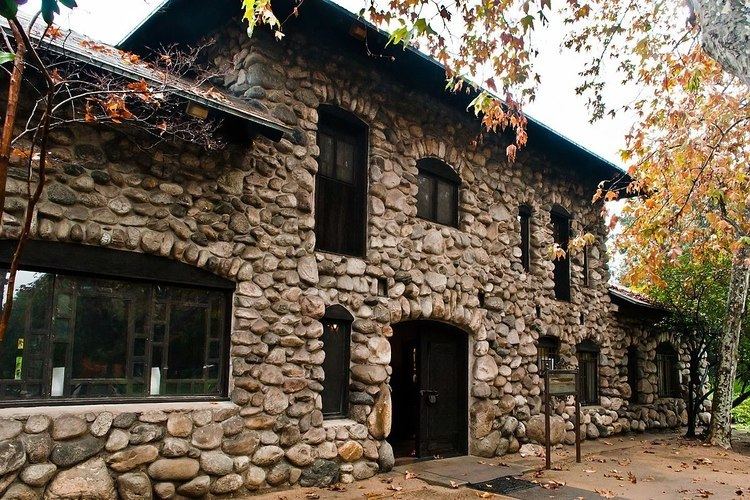Area 3 acres (1.2 ha) Built by Lummis, Charles F. Opened 1897 | Built 1897 NRHP Reference # 71000148 Phone +1 323-661-9465 | |
 | ||
Address 200 E Ave 43, Los Angeles, CA 90031, USA Hours Closed today TuesdayClosedWednesdayClosedThursdayClosedFridayClosedSaturday10AM–3PMSunday10AM–3PMMondayClosed Similar Southwest Museum of the Ameri, Heritage Square Museum, Arroyo Seco, Syca Grove Park, Ernest E Debs Regional | ||
California s gold with huell howser lummis house lost episode
Lummis House, also known as El Alisal, is a Rustic American Craftsman stone house built by Charles Fletcher Lummis in the late 19th and early 20th centuries. Located on the edge of Arroyo Seco in northeast Los Angeles, California, the house's name means "alder grove" in Spanish.
Contents
- California s gold with huell howser lummis house lost episode
- Museums of the arroyo mota heritage square lummis house may 15 2016
- History
- Museum
- References
The property is a Los Angeles Historic-Cultural Monument and on the list of the National Register of Historic Places.
Museums of the arroyo mota heritage square lummis house may 15 2016
History
Lummis purchased the three-acre lot (1.2 ha) sometime between 1895 and 1897 and named it "El Alisal" in tribute to the thicket of alder and sycamore trees that grew in the arroyo. The 4,000-square-foot home (370 m2) took 13 years to build. The exhibition hall has a concrete floor so that after a party that might include artists, writers and musicians, it could easily be cleaned with a bucket of water. Notable people who stayed in his guest houses included Clarence Darrow, Will Rogers, John Philip Sousa and John Muir. The property was on the edge of the scenic Arroyo Seco and Lummis founded the Arroyo Seco Foundation in 1905 to promote recreational use and preserving habitat. In 1939, strong consideration was given to creating a theater and Spanish supper room at El Alisal since this was Lummis' wish. In 1940 the Arroyo Seco Parkway, the first freeway, was built between the house and the newly constructed flood control channel in the arroyo.
In 1965, it became the headquarters for the Historical Society of Southern California and the house was opened to the public. By 2014, the city was concerned that visiting hours were too limited and that the historical group was not truly focused on a partnership with the Parks and Recreation Department. The Historical Society was concerned about the city's expectations that a tenant would invest in the house without committing to a long-term lease. The Historical Society of Southern California left the Lummis House in January 2015. The Lummis House is now operated by the City of Los Angeles Recreation and Parks Department.
Museum
The Lummis House is operated by the city of Los Angeles as a historic house museum. The exterior of the house is built of river rock and originally contained a stone tower, but that was later demolished. The interior contains some of Lummis's collection of artifacts, as well as copies of many of his books. The museum is open to the public for tours.
The drought-tolerant and California native plants predominate in the gardens and natural landscape around the residence, including namesake El Alisal California Sycamore trees.
